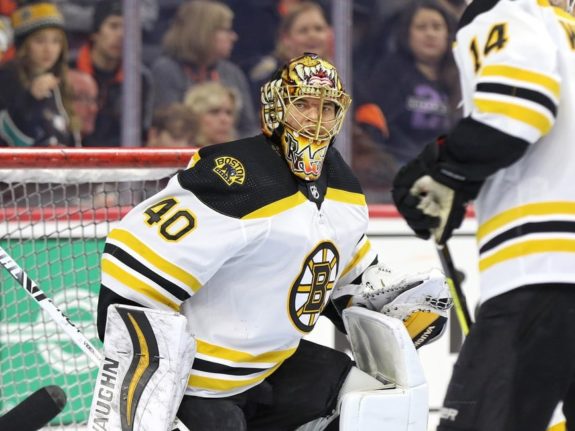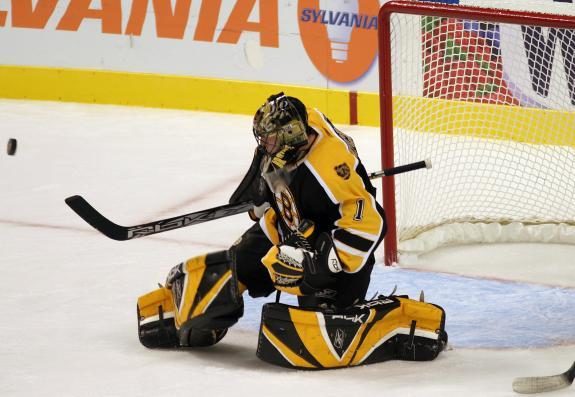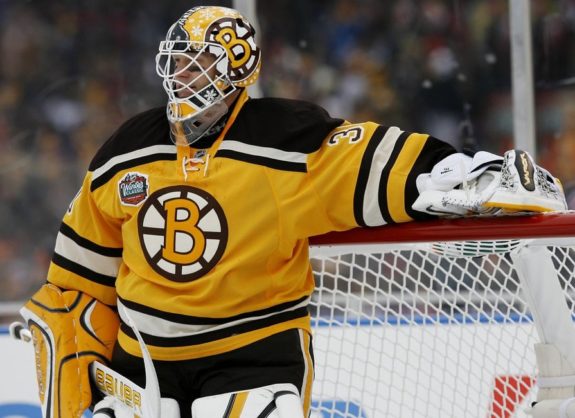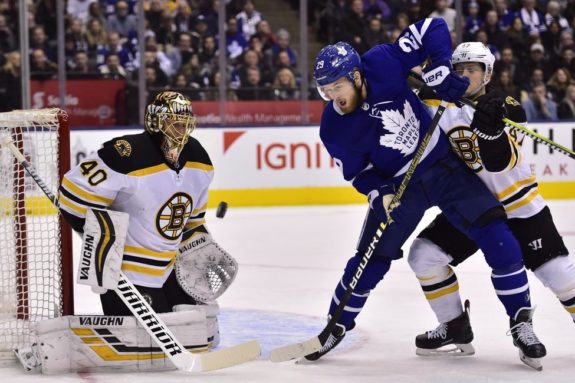It seems as if every season in the NHL there is a trade that has a clear winner and loser. Sometimes it can take months or even years to tell who that winner is, and the impact from that deal can be felt for years to come.
In the case of the Toronto Maple Leafs, the decision to trade Tuukka Rask to the Boston Bruins for Andrew Raycroft in 2006 was a clear loss. While it was impossible to predict the way the trade would turn out, the last decade of Maple Leafs hockey might look completely different if that deal hadn’t been made.
Maple Leafs at the Turn of the Century
In the early 2000s, the Maple Leafs were set up nicely at the goaltending position. In 1998, the Maple Leafs signed free agent Curtis Joseph to a contract through the 2001-02 season. In 2002, they signed Hall of Fame goalie Ed Belfour to a deal through the 2005-06 season.

At the 2005 NHL Entry Draft, the Maple Leafs drafted Tuukka Rask 21st overall — the second goalie taken in the draft after Montreal Canadiens’ superstar Carey Price. Although there were high hopes for the young netminder, the Finland native elected to play for Ilves Tampere in the Finnish Elite League following his draft, and never suited up in a Maple Leafs uniform.
After a lacklustre 2005-06 season where the Maple Leafs missed playoffs and finished in ninth place in the Eastern Conference, then-general manager John Ferguson Jr. was tasked with finding a replacement goalie. With Belfour’s contract expiring but management not looking to rebuild, Ferguson decided to go the trade route to make his team better.
No Rebuild for Maple Leafs
On June 24, 2006, it was announced that the Maple Leafs acquired Andrew Raycroft from the Boston Bruins in exchange for Rask.
Raycroft was a Bruins fourth-round pick in 1998 and spent the majority of his first three seasons with Boston’s AHL affiliate in Providence, Rhode Island. In the 2003-04 season, he posted a remarkable 29-18-9 record with a 2.05 goals-against average (GAA) and a .926 save percentage (SV%) on route to winning the Calder Trophy for Rookie of the Year.

The 2004-05 lockout might have been the worst thing to happen to Raycroft’s career, as he never returned to the Calder Trophy caliber we saw during the 2003-04 season. In 2005-06, Raycroft went 8-19-2 in 30 starts for the Bruins with a 3.71 GAA and .879 SV%.
Related: One for the Ages – Dave Keon’s 1979-80 Season
Although hoping to get the Calder Trophy-winning Raycroft in an attempt to bring in an NHL-ready starting goalie, the Maple Leafs got the 2005-06 version of the goaltender. In trading away Tuukka Rask, the team gave up any goaltending stability that may have existed in the following years. The Maple Leafs would bounce between goaltenders for 10 years before finding their first true number-one goaltender since Belfour in Frederik Andersen.
Rask Dominant with Bruins
As a member of the Bruins, Rask started his tenure with the team’s AHL affiliate in Providence where he had two excellent seasons amassing an overall record of 60-33-6. The Bruins had a solid number-one goalie in Tim Thomas from 2006-2011, so it took a while for Rask to get his opportunity to shine as a starter.

It was the 2009-10 season when Rask made his first impact in the NHL. He started 45 games on his way to a 22-12-5 record with a 1.97 GAA and a .937 SV%. Although he did not play in the playoffs during the 2010-11 season, he was part of the Stanley Cup-winning Bruins team.
Related: Boston Bruins Logo History
Between 2012-13 and 2019-20, Rask won 244 games, the second most in the league. His 2.28 GAA was the lowest out of all goalies with over 250 games played, and he was tied with Marc-Andre Fleury with the most shutouts in the NHL with 39 over that same time span. He also won the Vezina Trophy in 2013-14.
Before the 2019-20 season came to a halt, Rask was having one of the best seasons of his career. He was leading the league with a 2.12 GAA and was second in SV% at .929, on his way to being one of the front runners for the Vezina Trophy. The Bruins were having another dominant season, sitting well ahead in first place with 100 points. Rask was leading the way for the team with a 26-8-6 record in 41 starts.
What Could Have Been
It has become pretty personal between Rask and the Maple Leafs. Over the past six seasons, the Bruins have been dominant in the Atlantic Division and crushed Toronto’s playoff dreams on multiple occasions. The Bruins seem to have the Maple Leafs’ number, which just adds insult to injury knowing the goalie leading the way could have been in Toronto.

If the Maple Leafs hadn’t made that trade for Raycroft back in 2006, the 2010s may have looked a lot different in Toronto. Names like Jonathon Bernier, James Reimer and Vesa Toskala may not have been seen in a Maple Leafs uniform.
While keeping Rask would have solidified the goaltending position sooner, it may have prevented Toronto from acquiring current star players like Auston Matthews, Mitch Marner, and William Nylander. We will never know whether keeping Rask would have led to success for the Maple Leafs, but based on the trade that was made, we can certainly label him as one that got away.
